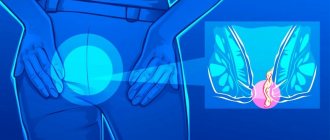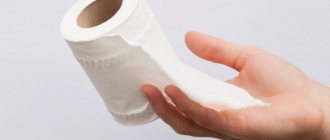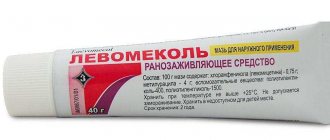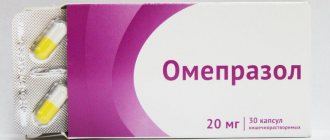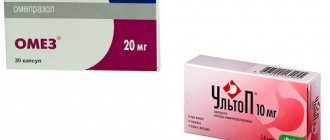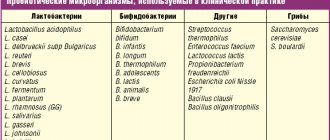An anal fissure manifests itself as a linear rupture of the rectal mucosa. The disease is more often detected in women who are overweight, have limited mobility, and in the postpartum period. An untreated process is accompanied by purulent inflammation that spreads to the surrounding tissue, with the formation of fistulous tracts into neighboring organs, and chronic inflammation of the prostate in men. Therefore, it is necessary to use drugs to treat the crack as early as possible to help eliminate the problem.
The choice of optimal means is determined by a coloproctologist after examining and examining the patient. You should refrain from self-therapy, since each remedy has contraindications and is limited in dosage and course of use. Due to erroneous treatment, the symptoms do not disappear, increased pain and acute bleeding are possible.
Basic principles of treatment of anal fissure
Therapeutic tactics are chosen by the doctor for a specific case. The scheme for getting rid of the disease includes:
- Mandatory stages of treatment - at an early stage, microcracks can be well treated with sitz baths and diet. In case of severe symptoms, a complex of drugs is prescribed. The lack of a proper result will require the use of minimally invasive methods (infrared coagulation) or resection of the intestinal defect with incisions on the sphincter muscle.
- Switching to dietary nutrition - to eliminate constipation and soften stool, you will need to avoid irritating foods that cause increased gas formation and intestinal distension, and drink more fluids.
- Eliminating bad habits - stopping smoking, giving up alcohol.
- Supportive treatment of the underlying disease that caused the fissure (hemorrhoids, cardiac decompensation, gastric ulcers, enterocolitis, atherosclerosis).
- Targeted fight against pathological changes in the tissues of the rectum, contributing to the rupture of the mucous membrane, with drugs.
- Impact on the rupture with drugs that relieve pain and sphincter contractility, improve blood flow in the pathological area, heal by stimulating local immunity, activate tissue metabolism, and have an anti-inflammatory effect.
Small cracks with mild symptoms can be treated at home. Increased pain will require hospitalization in a specialized department and controlled additional use of physical therapy methods, and, if necessary, surgery.
The use of folk remedies for cracks in the anus must be agreed with a doctor. They are not the basis of drug treatment, but are allowed to enhance the result.
Symptoms and signs of anal fissure
A disease such as anal fissure exhibits quite obvious symptoms. First of all, you need to pay attention to the appearance of severe pain when going to the toilet or after it. Usually this pain is acute, it can be compared to finding glass right in the anus, so this sensation definitely cannot be tolerated. As a rule, the pain bothers a person for a long time and gets worse with prolonged sitting. Doctors note that an acute anal fissure can lead to a nervous state and insomnia, as well as severe constipation and exacerbation of pathology. Another sign of a crack is bleeding.
List of the best drugs and remedies for the treatment of anal fissure
The best drugs cannot be presented in a list, since for each patient the choice remains individual and depends on the following:
- degree of development of pathology;
- size and depth of the defect;
- the body's sensitivity to drugs;
- duration of use (at the first symptoms or in an advanced stage);
- complicating treatment conditions with concomitant diseases (diabetes mellitus, chronic hemorrhoids) or during pregnancy.
Therefore, we will analyze the action and indications for the use of individual medications for informational purposes. We do not recommend using the information for self-treatment. Instead of the effect, you can achieve the opposite effect. The pharmacy offers a sufficient choice of remedies to treat cracks in the anus. It should be clear to an adult that a pharmacist (pharmacist) is not a doctor, and therefore has no right to prescribe therapy, and his recommendations are questionable. Doctors prefer medications with a combined composition that simultaneously have an analgesic, anti-inflammatory and healing effect.
Ointments: rules of use
Any ointment for the treatment of cracks has a soft, fatty base, the concentration of the active substance is much greater than in the form of a gel or cream. The composition excludes irritating substances and contains compatible agents for surface action on the skin and mucous membrane of the anus.
It is recommended to use twice a day after sitz baths with disinfectant herbs. It is necessary to purchase sterile wipes. Approximately 1 cm of the drug is squeezed out of the tube. It needs to be smeared on one side and applied to the damaged area as a compress. It is better to carry out the procedure at night, during the day after bowel movements and washing.
When using ointments, it is recommended to treat an acute crack without interruption for 7-10 days. During this time, it is not possible to cure the chronic process. Doctors use alternating agents with different mechanisms of action. Here is a brief description of the most popular formulation of ointments for anal fissure.
What should I use to coat cracks?
Currently, there is a wide range of remedies that are indicated for anal fissures.
List of the best ointments:
- Heparin. It is the most popular drug for the treatment of cracks. The active substance is heparin. Relieves itching, burning, swelling and has analgesic properties. Can be used during pregnancy. Any bleeding from the anal area is a complete contraindication. The average price of the drug is 55-70 rubles.
- Vishnevsky ointment. The product eliminates the discomfort that accompanies anal fissures, but before using it it is important to prepare the skin. Initially, special compresses are applied to the site of inflammation - and only after that an ointment is applied, which is covered with a cotton swab. The ointment is quite effective, so treatment of small anal fissures usually does not take more than 2 days. Price - 30-45 rubles.
Balsamic liniment according to Vishnevsky - Levomekol. The drug is a good antiseptic that eliminates swelling. It has similar properties as methyluracil ointment, the task of which is to eliminate microbes and bacteria in the area of inflammation. In case of purulent lesions, Methyluracil is indicated. Levomekol for anal fissure must be applied at night. The price of the drug is 130 -150 rubles.
- Relief. The ointment, like suppositories with the same name, has wound-healing, antibacterial and regenerating properties. Most often this drug is prescribed if the cracks are complicated by hemorrhoids. Price - 450 - 500 rubles.
- Solcoseryl. An effective remedy that heals affected areas of the epithelium and suppresses the proliferation of pathogenic microorganisms. In most cases, it does not cause unpleasant side effects or allergic reactions. You can apply both ointment and cream. Average price - 250 - 300 rubles.
- Bezornil. The drug is used to treat cracks caused by hemorrhoids. It has bactericidal, wound-healing and regenerating properties. The composition includes herbal preparations of traditional Chinese medicine. Price - 370 - 430 rub.
- Wundehil. Anti-inflammatory and wound-healing drug of plant origin. Effective in treating cracks at the initial stage of development. The ointment should be applied 3 times a day to the affected area of the mucous membranes. Price - 90 - 100 rubles.
- Pantestin. Gel with wound healing and antiseptic properties. Indicated for acute anal fissures and after rectal surgery. Price - about 250 rubles.
- Ichthyol ointment. It is a strong antiseptic, which is most often used to heal small scars after hemorrhoids. Apply the drug with a cotton swab. At the beginning of the course of use, unpleasant sensations in the form of itching and burning may occur, since the product not only heals well, but also disinfects. The average price of the drug is 90 - 130 rubles.
- Fleming's ointment. A natural drug with a minimum number of contraindications. Can be used during pregnancy, breastfeeding and children. The use of the drug will have an effective result only at the initial stage of the disease. Price - from 320 to 390 rubles.
- Stellanin. Initially, the ointment was intended for the treatment of serious wounds of the skin and mucous membranes, and later showed its effectiveness in treating hemorrhoids and anal fissures. Initially, the drug is applied to a tampon, and then applied to the problem area. The price of the ointment is about 450 rubles.
- Zinc ointment. The budget drug has bactericidal, drying and anti-inflammatory properties. Effective for minor fissures resulting from the development of hemorrhoids. Price - 37 - 43 rubles.
User selection
When is self-treatment not recommended?
Doctors do not recommend self-treatment of anal fissure without examination by a doctor. Serious mistakes are too costly for the patient. Untimely and incorrect use of medications or refusal of them contributes to the transformation of the fissure into a chronic one, in which conservative methods of therapy are almost excluded, and only surgical intervention is indicated.
Not only complications are important, but also the following:
- probable omission of a similar intestinal pathology;
- bringing your own health to an extremely neglected state, a decline in immunity.
Cases of self-scarring cracks are described in the medical literature. They are possible at a young age, in a person with strong defense mechanisms. The most likely option is severe painful symptoms, which do not exclude the presence of a malignant tumor in the intestine.
An undeniable argument for medical participation in treatment is the inability of the patient himself to understand the causative factors of the disease. Exclusively symptomatic treatment cannot lead to recovery.
Ointments during pregnancy and lactation
During pregnancy, the enlarged uterus puts pressure on the rectum, which:
- complicates the process of defecation, leading to constipation;
- negatively affects the blood supply to cells;
- weakens the tissues located in the anus area, making them more vulnerable;
- increases the risk of crack development.
This is also caused by pushing during childbirth, when weakened tissues have to strain excessively, and the fetus moving along the birth canal stretches the walls of the rectum.
The choice of drugs that can get rid of an unpleasant problem for expectant mothers and during lactation is limited, since the substances included in their composition can have a detrimental effect on the baby’s health. Self-medication in this case is unacceptable.
Pregnant and young mothers are offered safe medications based on natural ingredients with a minimal synthetic content that do not have the ability to affect the development of the fetus.
For the treatment of anal fissures in this group of patients, the following is used:
- solcoseryl;
- levomekol;
- methyluracin ointment;
- troxevasin;
- neo-anuzol.
In addition to using ointments, the doctor:
- prescribes a diet to prevent constipation. It should be borne in mind that taking laxatives is also undesirable during pregnancy, as they can cause a miscarriage;
- recommends daily simple exercises. Light exercise and walking will stimulate blood supply to the tissues in the anal area.
How long does it take to treat a crack at home?
For an acute crack to heal under favorable conditions with diet, medication, and physical therapy, 1-2 months are needed. The specific period depends on the state of the body (immunity), the size of the crack, and the timely start of treatment. The transition to a chronic course is accompanied by thickening of the edges and sphincter spasm. There is no non-surgical solution. The postoperative period will last 2-3 months.
If the patient refuses surgery, the best effect will be a short-term reduction in pain and burning, but soon the symptoms recur in a more severe form. The duration of treatment is increased if the following conditions are present:
- the patient does not follow the diet, constipation continues;
- alcoholic beverages are consumed;
- training with weight lifting continues;
- the treatment plan and timing are disrupted;
- suppositories with hydrocortisone are used for a long time;
- the underlying disease that caused the cracks is not treated.
Why do anal fissures occur?
An anal fissure cannot just appear; the reasons may be different. Experts identify mechanical damage to the back and problems due to the sphincter.
Mechanical damage can occur due to:
- solid objects found in feces;
- anal sex;
- tools during diagnostics of the body and low qualifications of personnel.
An anal fissure often occurs in women during childbirth. So there are actually a lot of reasons for the pathology. Experts have long established that anal fissure appears even due to chronic constipation.
When is urgent medical consultation necessary?
Consultation with a coloproctologist is required if there is severe pain during bowel movements. Unlike hemorrhoids, the patient does not experience the sensation of a foreign body in the anus and does not feel an increase in external nodes. The pain is so severe that it creates a fear of defecation, forces you to endure and hold back stool.
The body perceives this condition as constant stress. Reacts with fluctuations in blood pressure, nervous breakdown, irritability, and insomnia. Without medical intervention, complications soon develop in the form of rectal fistulas, purulent paraproctitis (indicated by high temperature), prostatitis in men, and intense bleeding.
Let us recall that patients with anal fissures are at risk for malignant intestinal tumors. So is it worth deliberately ruining your health? Timely contact with a specialist helps solve treatment problems.
In the treatment of anal fissure in the preoperative period, drugs are used that relieve pathological changes in the rectum. With timely treatment, the possibility of complete recovery remains possible. The likelihood of recovery often depends on the mood and character of the patient.
How to recognize an anal fissure
An anal fissure or anal fissure is a vertical tear in the rectal mucosa in the anal area. It has a linear, oval or triangular shape. As a rule, the length of the crack reaches 2 cm, and its width and depth are several mm. Usually the fissure is located on the back wall of the rectum, less often on the front and side walls.
An anal fissure is often confused with hemorrhoids - inflammation of the hemorrhoidal veins, leading to their expansion and the formation of nodes in the anus. These are different diseases with similar symptoms.
Common causes of anal fissure are:
- damage to the mucosa by solid inclusions in the stool. These could be swallowed bone fragments, plum or apricot pits, pumpkin seeds;
- anal injuries during rough anal sex;
- ruptures during instrumental diagnostic procedures. Possible due to inept actions of medical staff;
- regular constipation, leading to the accumulation of dense stool in the rectum and the need for excessive pushing during bowel movements.
Increases the risk of cracking:
- excessive drinking;
- the presence of a large amount of fatty, salty and spicy foods in the diet;
- sedentary lifestyle;
- work that involves lifting heavy weights.
In women, anal fissures often appear during pregnancy and childbirth.
The occurrence of this defect is also facilitated by:
- gastrointestinal diseases (gastritis, ulcers) that impair the blood supply to the lower parts of the rectum;
- insufficient hygiene of the anus;
- abuse of laxatives and enemas.
If any symptoms appear, you should consult a doctor.
To diagnose a crack, do the following:
- visual inspection and palpation;
- anoscopy;
- sigmoidoscopy.
The purpose of the research is to determine:
- accurate diagnosis;
- type of crack (acute, chronic);
- its exact location;
- absence or presence of an inflammatory process.
Based on the data obtained, the optimal treatment method is selected.
How to treat a chronic fissure in the anus
Antibacterial ointments are often used for short courses of 1-2 weeks, but sometimes the disease becomes chronic and causes constant discomfort to the person. Treatment agents of this form must have anti-inflammatory and restorative properties. As a rule, specialists prescribe the following drugs to treat the chronic form of the disease:
- Aurobin. This is an effective local remedy that kills bacteria, relieves pain and inflammation. Place the medication directly into the anus; you can use a tampon for this purpose.
- Proctosan. The product has drying properties; use the medicine 2 times a day immediately after bowel movements.
- Nitroglycerin ointment. Counteracts inflammatory diseases, rapid tissue healing. It is recommended to use the remedy for a month to get rid of this pathology forever.
Using Vishnevsky ointment
Among the old and time-tested drugs used in the treatment of anal fissures is Vishnevsky ointment (another name is Balsamic liniment). The active components of this medicine are natural birch tar and xeroform. In addition to them, it contains castor oil and silicon dioxide. The drug is produced in the form of a homogeneous liniment of yellow or brown color with a strong and very unpleasant odor. The ointment has an antiseptic and astringent effect. When applied topically in proctology, its active components accelerate the healing of cracks in the anus, reduce pain and itching, promote faster regeneration of damaged tissue, and improve blood circulation in the rectal area.
Contraindications to the use of the drug are: hypersensitivity to its components and children under 12 years of age. Pregnant and breastfeeding patients should only be treated with this drug on the advice of a qualified healthcare professional.
To heal anal fissures, balsamic liniment is used as a means for preparing compresses. A sterile bandage is generously impregnated with the drug, which is subsequently fixed to the anus. It is advisable to carry out the procedure before bedtime and leave the compress on for a long time.
The duration of therapy is determined by the attending physician individually in each individual case. Vishnevsky ointment is well tolerated by patients and rarely causes side effects. Sometimes, while using it, a person may experience complaints of allergic reactions and irritation in the anal area. If undesirable symptoms appear, treatment with the drug should be stopped and consult a doctor.
Use of Heparin ointment in proctology
The list of drugs that effectively heal cracks in the anal area includes Heparin ointment, created on the basis of the active components sodium heparin, anesthesin and benzyl nicotinate. Additionally, the product contains: petroleum jelly, glycerin, propylparaben, methylparaben, sunflower oil, water. The drug is available in the form of a light yellow, homogeneous ointment with a faint odor. The drug promotes rapid healing of anal fissures, eliminates pain and burning, improves tissue regeneration and reduces local inflammatory reaction.
It is recommended to apply heparin ointment to the affected area in an even layer. If there is a deep anal fissure, it should be used in the form of applications. In some cases, the doctor may advise the patient to insert tampons soaked in the drug into the anus. Heparin-based ointment is not prescribed to people with:
- hypersensitivity to the substances included in its composition;
- violation of the skin in the anal area;
- ulcerative-necrotic processes.
If a person has thrombocytopenia and diseases accompanied by poor blood clotting, as well as during pregnancy and breastfeeding, the ointment must be used under the supervision of a physician. Despite the fact that the drug is well tolerated by the vast majority of patients, in some cases it can provoke complaints of allergic reactions and hyperemia of the skin.
Ointments prescribed by doctors for anal fissure have a rapid wound-healing and anti-inflammatory effect on the affected area. Their use in accordance with the indications of a proctologist allows a person to quickly forget about the unpleasant symptoms of the disease and return to their normal lifestyle within a few days after the start of treatment. Explaining how to deal with fissures in the anus, doctors strongly recommend that patients not self-medicate, since even the safest remedy can be harmful to human health if used improperly.

